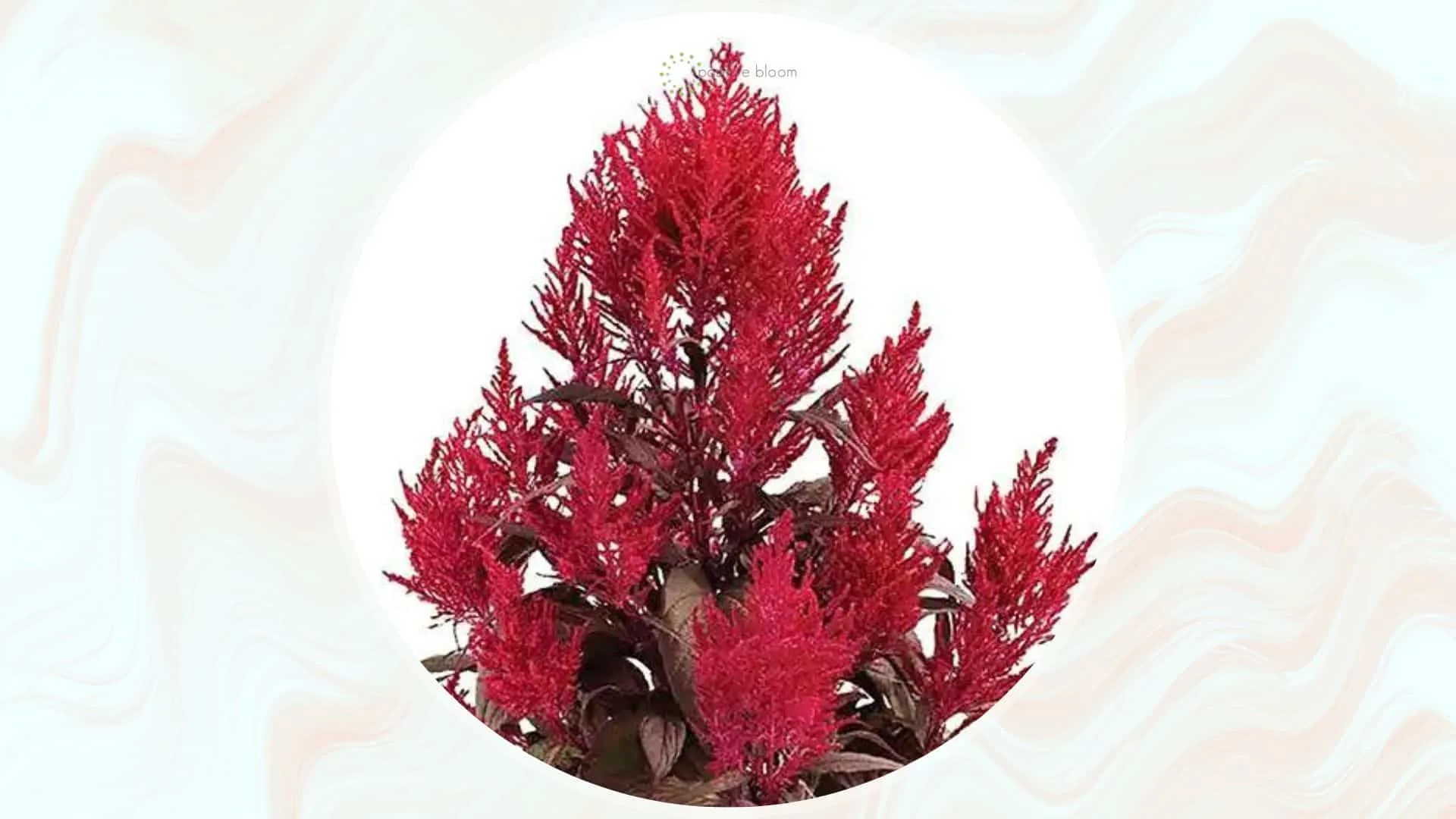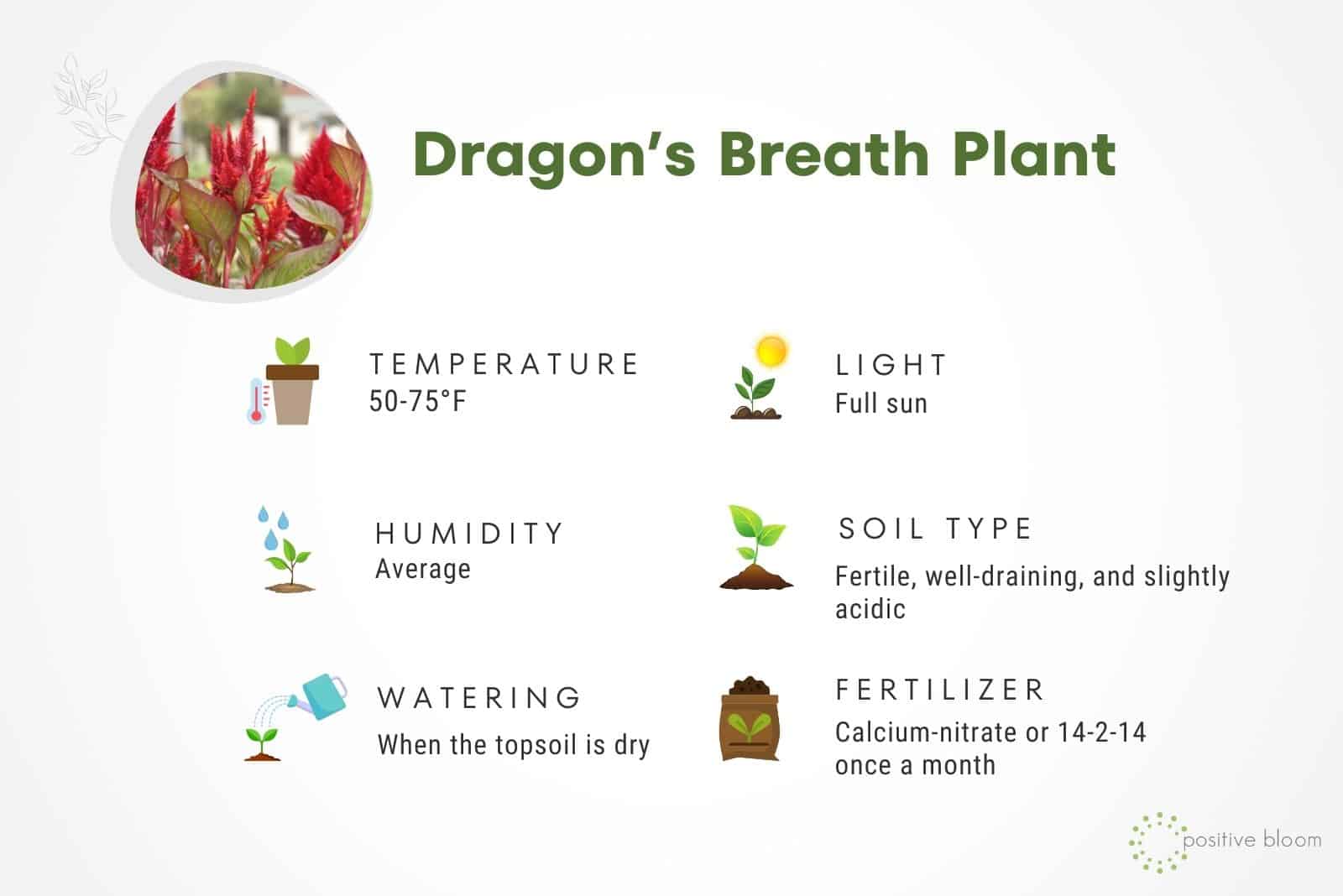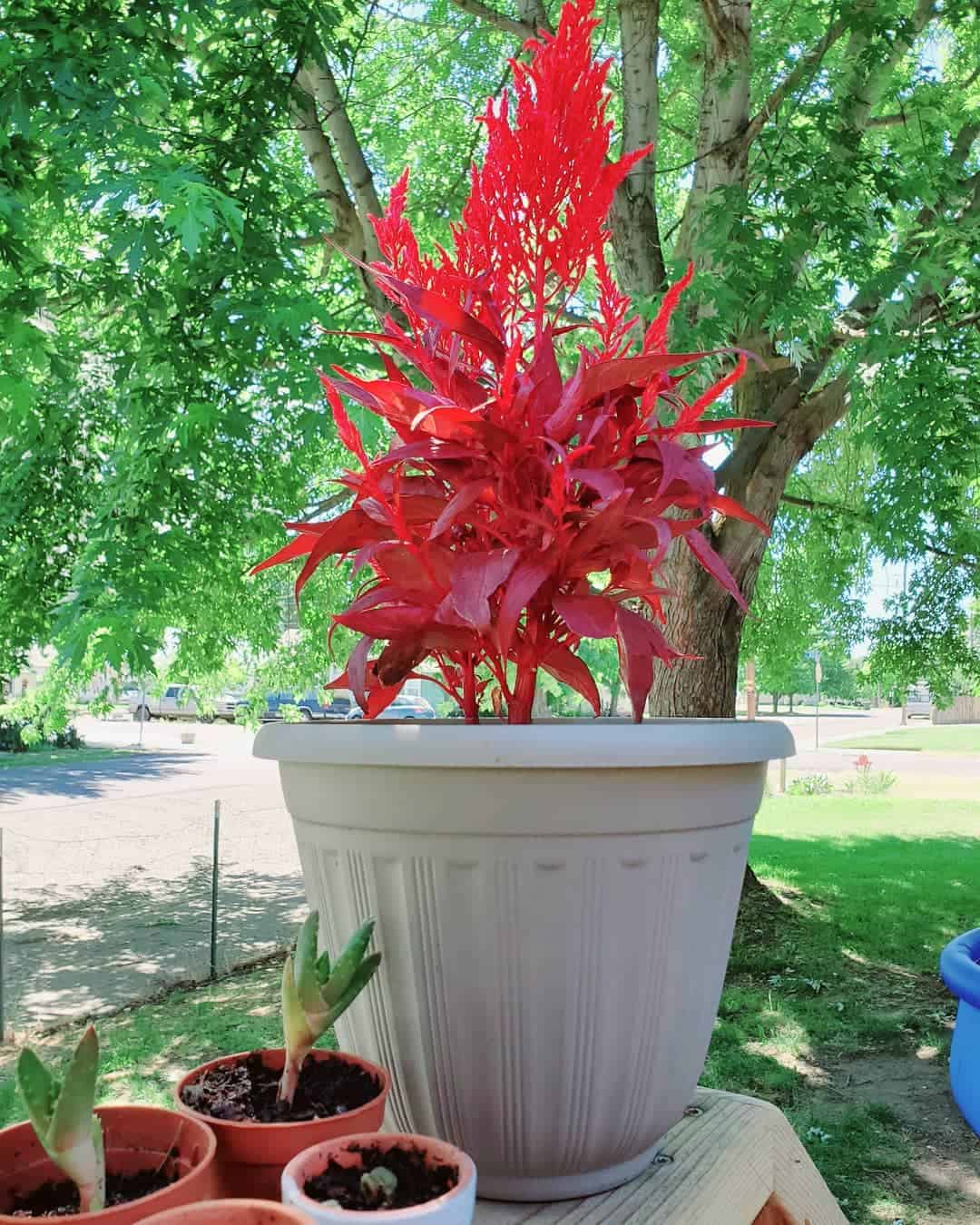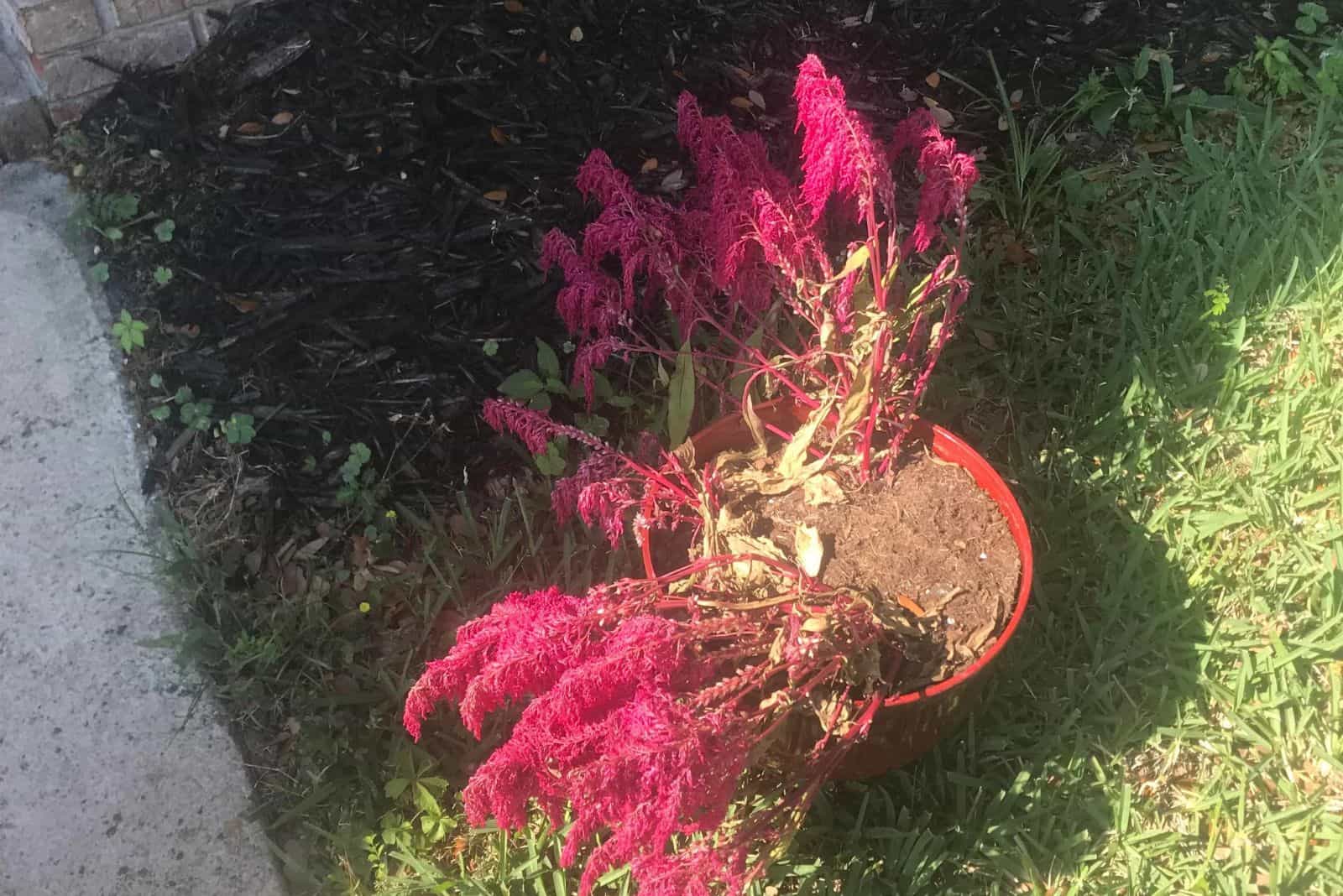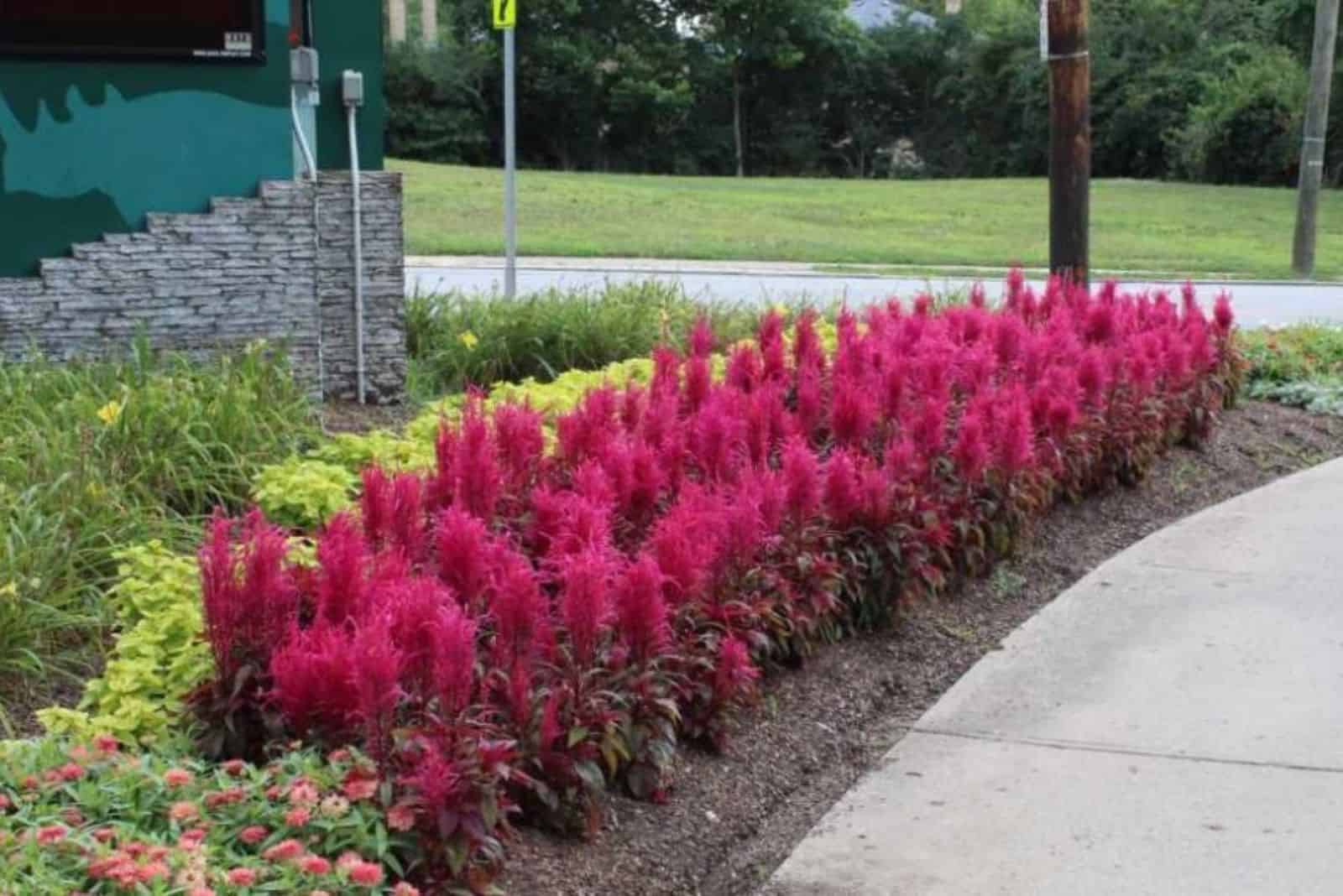There are many landscaping plants and ornamental grasses people implement into their outdoor decor, and one of the most popular choices is definitely the dragon’s breath plant!
This variety has amazing, red-pigmented flowers and crimson foliage, making it a perfect choice for an all-white garden, an addition to your patio, or as part of your walkways.
It isn’t that demanding to grow and is even drought-tolerant once it gets established, so you won’t have to devote too much of your time and energy to it.
On the other hand, it is a bit susceptible to pests and diseases, so you will have to take good care of it in order to avoid dealing with these issues.
But don’t worry too much about that because this article discusses everything you need to know about caring for this celosia.
Before we get to those things, let’s learn some general information about the Dragon’s breath plant:
[table id=667 /]
Dragon’s Breath Plant Care
The dragon’s breath cockscomb requires full sun conditions to turn that deep red we all want to see, as well as some water during drought spells and a bit of fertilizer from time to time.
Furthermore, we typically grow these plants as annuals in USDA hardiness zones below 10, but if you live in a warm climate (zone 10 and above), you can grow this plant as a short-lived perennial and enjoy its beautiful colors for more than just one season.
Also, the celosia has many companion plants, and you can grow it alongside your roses, marigolds, petunias, and zinnias.
Light Requirements
Celosia plants require full sun conditions in order to thrive, and the same goes for the dragon’s breath plant.
It requires at least 6-8 hours of direct sunlight each day to produce ample blossoms and obtain that deep red shade we all adore.
Place it in a location where it’ll get direct sunlight in the morning or late afternoon since the sun rays aren’t that harsh during these times and won’t damage your plant.
This celosia can also tolerate some partial shade, but it won’t be as breathtaking as in full sun.
Water And Humidity
Young dragon’s breath celosias require a consistently moist growing medium, which is why you should irrigate them about once a week.
But once they get established, you don’t have to water them at all if you keep them outside and you live in a rainy region.
Of course, you will need to irrigate them during prolonged periods of drought, and in this case, the best watering technique is to hydrate them once you notice that the top portion of the potting medium is dry.
You can use distilled or rain water, although using rice water for plants isn’t a bad idea, and you can add some nutrients to it and have it last a little bit longer until fertilization.
Humidity
This celosia plant thrives in average humidity, so you don’t have to worry about it being too dry for it.
It gets most of its moisture from the soil, so just make sure it’s well-hydrated.
And if you live in a high-humidity area (like we do), planting these cockscombs about 2-3 feet away from each other will ensure plenty of air circulation and keep them safe from foliar fungal diseases.
Temperature
This celosia plant needs warm temperatures to flourish, which is why you should expose it to conditions between 65 and 75 degrees Fahrenheit.
Since it’s native in USDA zones 10 and above, it can tolerate hotter conditions, but in these cases, you might want to provide it with a cover and some shade during the hottest times of the day.
And if you expose your celosia to lower night temperatures (between 50 and 60 degrees Fahrenheit), it will exhibit deeper redness of its flowers and foliage.
Soil And Fertilizer
The dragon’s breath cockscomb thrives in well-draining mediums rich in organic matter.
Therefore, always look for substrates with coco coir or peat moss, but which also contain vermiculite, perlite, and pumice as well.
This species also needs a fertile growing medium to be at its best, and you can increase the fertility by adding some compost or aged manure.
Finally, ensure that the pH is slightly acidic and between 6.0-6.5 for the best nutrient and moisture absorption.
Fertilizer
This celosia can adapt to lower amounts of phosphorus and ammonia, and grow perfectly well in such conditions, which cannot be said for other plants. In fact, these nutrients can result in vigorous and bushy growth, but will keep the plant more green than red.
If you want it to obtain and keep its deep red color, you can incorporate some calcium-nitrate fertilizer along with the regular usage of 14-2-14 or a similar low-phosphorus formula.
You can also try using eggshells for container plants since they also contain high amounts of calcium.
If you use slow-release fertilizers, you can apply them 2-3 times a year, depending on how long they last.
And if you prefer using liquid varieties, you can feed them to your plants once a month during their growing season.
Repotting
Since this plant is usually grown as an annual, you don’t have to worry about its repotting requirements, as you won’t have to move it at all.
But if you live in a warm region and grow it as a perennial, you might want to repot it either in the same container (if your plant hasn’t overgrown it) or in a planter one size larger.
The main reason we do this is to replenish the soil and nutrients.
Therefore, when you decide to move this plant to a new container (or just change the soil), you first need to take it out of its current planter.
Then place some fresh potting mix in the bottom of the new pot (or the same one), put your dragon’s breath plant in it, and cover its roots with more growing medium.
Pruning
This eye-catching celosia is a low-maintenance plant, which means it doesn’t require extensive pruning.
In fact, it grows best if you leave it on its own, so don’t trim it unless it is absolutely necessary.
The only time you should consider cutting off some of this plant’s leaves is if you notice that they are discolored or diseased.
In this case, remove the infected foliage at once since the plant will waste its energy trying to make them better (although it will never happen).
When you remove the diseased foliage, your plant will soon put on some healthy new leaves just waiting to obtain that mesmerizing crimson color!
Finally, when we trim our plants, we love using pruners for arthritic hands (even if we don’t suffer from this condition) because the handles are ergonomic and require less pressure, making it easier to trim plants for longer.
Propagation
You can propagate the dragon’s breath celosia through cuttings and seeds.
When propagating stem cuttings, you should choose a mature stem, snip it, and remove the foliage. Place it in water, expose it to bright light and warm temperatures, and you’ll notice a root system developing if the propagation was a success.
And once the roots form (which usually takes about a month or so), you can repot your new plant into a container or a garden.
Seed propagation is a bit more demanding, but also more successful in our opinion, and here are the steps for how to do it:
Step 1. Select a mature flower head and snip it. It needs to have a “hairy,” somewhat brown stock near the bottom since that’s where the seeds are stored.
Step 2. Scrape the bottom part of the stock with a knife or some scissors, and you’ll notice tiny black seeds. Collect them all if you can, as you don’t want to waste any of the viable parts that can develop into new plants.
Step 3. Fill a nursery pot with a well-draining potting mix and sprinkle the seeds on top of it.
Step 4. Lightly cover the seeds with more growing medium. Don’t use too much soil because the seeds won’t be able to germinate easily and push through it.
Step 5. Water the seeds deeply and keep them in a warm location.
Step 6. The seeds should germinate after about 1-2 weeks, which is when you should transfer them to a location with indirect light so that the young seedlings can photosynthesize and develop.
Step 7. Keep the seedlings in a nursery pot until they develop 2-3 sets of true leaves. After that happens, you can move them to a larger container or in the ground if the temperatures are warm enough (not lower than 50 degrees Fahrenheit at night).
Common Issues
Like many other plants, the dragon’s breath cockscomb is also vulnerable to pest infestations and diseases.
Of course, you can reduce the risk of these issues by meeting all your plant’s requirements since insects don’t usually invade healthy plants.
Pests
Common insects that attack this celosia include mealybugs, mites, and aphids. However, not all soil mites are bad for your plants because there are some critters that actually help break down the organic matter and enrich the growing medium with more nutrients.
It’s important to know how to get rid of spider mites fast (just like mealybugs and aphids).
If one of these insects finds its way onto your celosia, you can easily remove them by spraying some insecticidal soap or neem oil.
Diseases
The most common diseases that afflict the dragon’s breath plant are root rot and powdery mildew, although the first one is more dangerous.
We cause root rot by overwatering, and powdery mildew by wetting the leaves and growing plants in hot and highly humid areas with little-to-no air circulation.
Therefore, if we avoid these conditions, our plants won’t have to deal with such diseases.
Below, you can read more about the symptoms of these diseases and how to treat them.
Root Rot
Signs of root rot include droopiness, stunted growth, yellowing of the foliage, an unpleasant odor coming from the container, and a soft main stem and foliage (which is a sign that the disease has progressed quite far).
The only way to treat this condition is by removing the rotting roots, and you’ll recognize them by their brown or black color and soft and mushy texture.
Once you cut away the diseased roots, you should transplant your celosia into fresh soil and a clean planter. You can also spray the remaining healthy roots with some broad-spectrum fungicide so that the disease doesn’t return, but that’s not necessary.
Pro tip: After you take the plant out of the pot, remove the dirt around the roots by washing it off. This will allow you to get a better look at the plant’s root system and prevent any contaminated soil from being transplanted along with the plant.
Powdery Mildew
Powdery mildew isn’t as dangerous as root rot, and won’t kill your plant any time soon.
However, it can disrupt photosynthesis since the white powder that appears on the plant’s foliage reduces the surface able to take part in this process.
You can use potassium bicarbonate to kill the fungal spores once the disease appears, or use other fungicides such as sulfur, neem oil, etc. as a preventive measure.
However, the best way to ensure that the disease is gone and won’t return is pruning the infected foliage, so don’t be afraid to grab your secateurs!
FAQ
What is the dragon’s breath plant used for?
You can use the dragon’s breath celosia for many artistic reasons, such as adding it to your live or dry arrangements, using them to decorate your patio, placing them along your walkways, etc.
You can also use this plant to add more color or texture to your color garden, or plant it on its own for a unique deep red display.
Is the dragon’s breath plant toxic?
According to the ASPCA, celosia plants are not toxic to cats, dogs, horses, or any other pets you might have.
Final Thoughts
The dragon’s breath plant is a unique variety whose deep red leaves and flowers mesmerize us every time we look at it.
It is suitable for various landscaping and decorative projects, so it’s not surprising that more and more growers are deciding to plant it in their backyards.
The dragon’s breath celosia is a drought-tolerant, low-maintenance plant that doesn’t require heavy pruning, high humidity, or frequent fertilization.
Although, you do have to plant it in a well-draining growing medium and expose it to warm temperatures and full sun.
If you don’t meet its requirements, it will suffer from root rot, powdery mildew, and pest infestations, although there are always solutions to these issues, and we discussed them in the sections above.
Enjoy the new appearance of your garden, and until next time!

